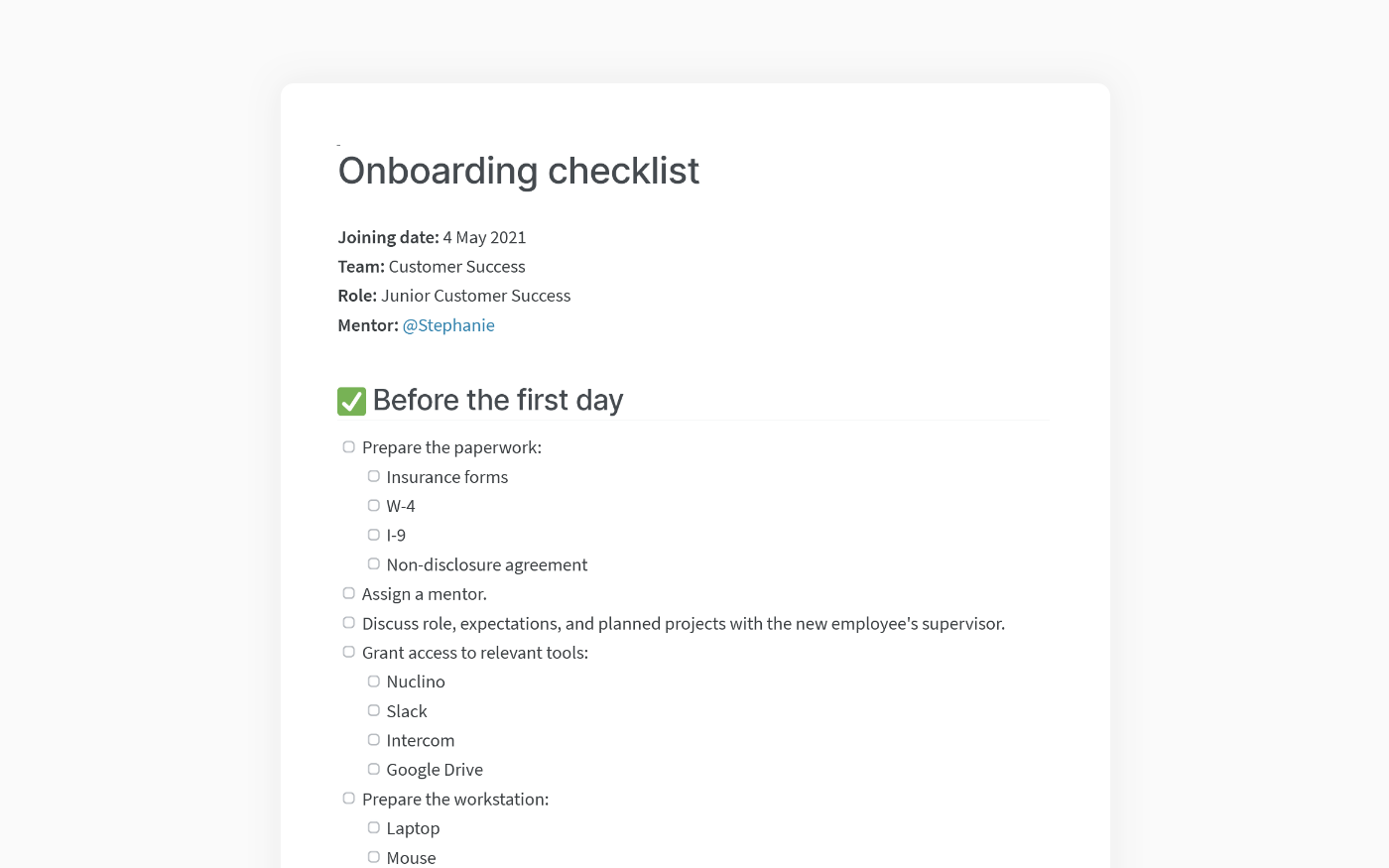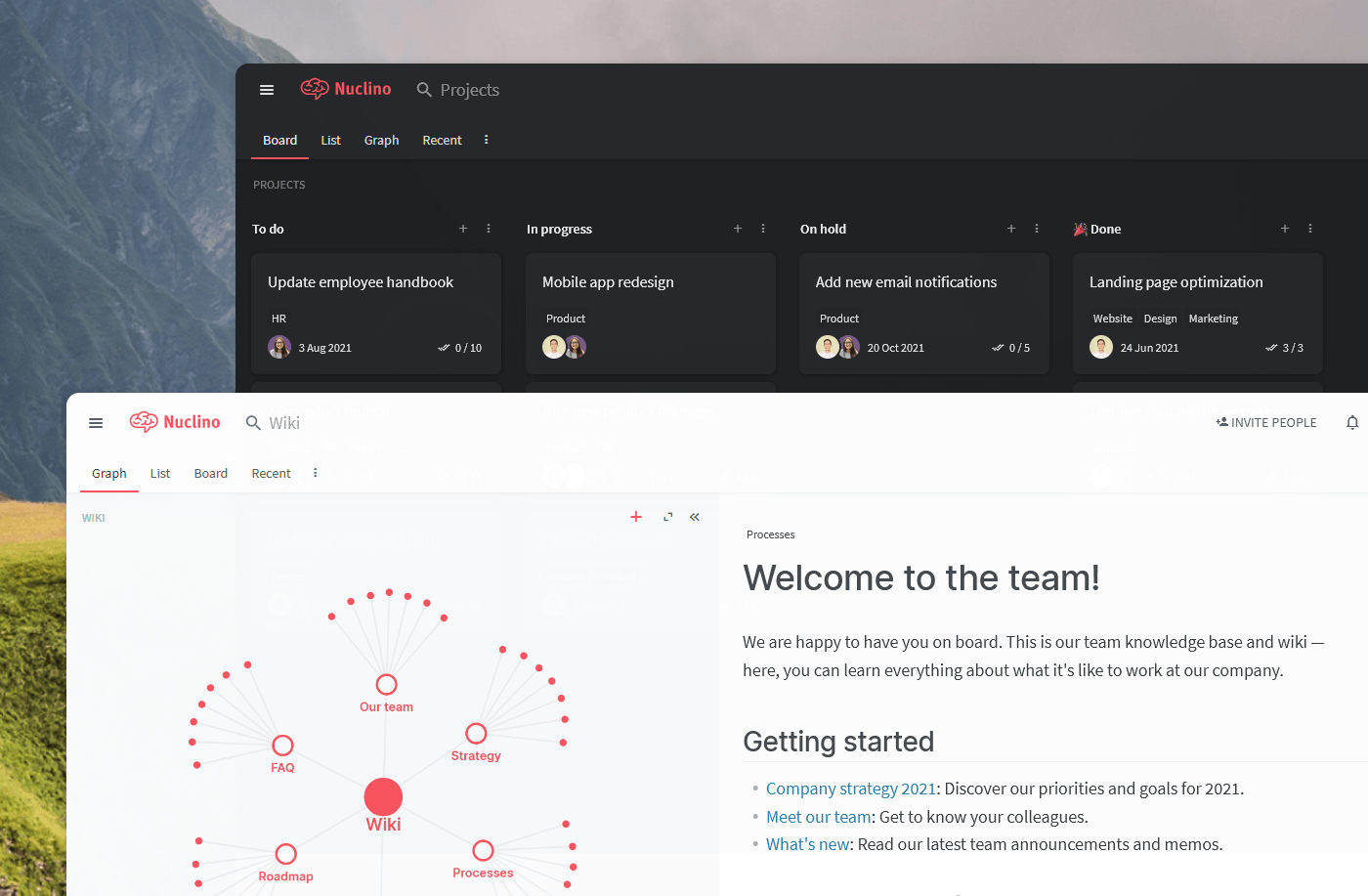New Hire Orientation Program: Best Practices
Learn how to make the best first impression and help your new employees start off on the right foot.
First impressions are everything.
According to a survey conducted by ServiceNow, about 80% of employees experienced some issues when starting a new job. 1 in 10 new hires reported that their company forgot it was their first day on the job entirely. Another study by BambooHR found that 31% of job seekers have left a job within six months of starting.
Such high employee turnover is expensive – yet entirely avoidable. Let's dive deeper into the reasons new employees leave and how to prevent it with a carefully planned orientation program.
- What is new hire orientation?
- How to plan your orientation program
- New hire orientation best practices
What is new hire orientation?
According to the BambooHR survey, the top three reasons for jumping ship so soon were:
Poor onboarding experiences
Lack of clarity surrounding job duties and expectations
An unpleasant boss
The good news is, these issues can be easily prevented with a thorough orientation program.

Employee orientation vs. employee onboarding
Orientation is often confused with onboarding. While these terms are sometimes used interchangeably, they are not the same.
The employee onboarding process is continuous and can span several months. It begins with the new employee receiving their offer letter and ends when they become a fully productive member of the team. Onboarding includes training and practical experiences that give employees deeper insights into the company and their job.
Orientation, on the other hand, is just the first stage of the onboarding process – but it is the most important one. An orientation program aims to introduce new hires to their jobs, colleagues, responsibilities, and workplace.
Both need to be a core part of your human resource management strategy.
What to include in your orientation program
Deciding what to include in your orientation program may be challenging. After all, there is so much to learn about the company and the job and so many people to meet.
But don't try to fit everything into the first few days. Remember, onboarding is a gradual process and you will have months to help your employee fully ramp up their productivity. During the orientation, focus on getting the most important tasks out of the way.
Before the first day
The first stage of the new hire orientation program takes place between the time your new team member signs an offer letter and arrives for their first day of work.
This part of orientation is not just about paperwork – offering an online "pre-orientation" can give your new employee a head start. They will learn key information at their own pace and have time to absorb it, allowing them to focus on meaningful introductions during their first day.

Orientation checklist to complete before the first day (created in Nuclino)
To easily keep track of all the tasks you need to complete during this stage, you may want to create a checklist. Nuclino can be a great tool for this. It's a unified workspace where you can share and collaborate on documents, manage projects, onboard new employees, take meeting minutes, collaborate on documents, and more. It works like a collective brain, allowing you to bring all your team's work together in one place and collaborate without the chaos of files and folders, context switching, or silos.
Your checklist can be as short or as long as you need. It commonly includes the following tasks and activities:
Send the new hire a welcome message, letting them know what to expect on their first day.
Ask the new hire to sign all the necessary paperwork.
Share information about your company’s history, mission, vision, values, culture, perks, and benefits. Share with them your employee handbook or add them to your company's internal wiki or intranet portal.
Set up accounts in all the digital tools your new employee will need (such as Slack, Zoom, Nuclino, and so on). Make sure their email address and business phone number are properly configured and ready to be used.
Assign a mentor and encourage them to reach out to the new hire to keep them engaged.
Get everything ready for the big day – prepare the new hire's workstation, issue the necessary IDs and key cards.
On the first day
Making your new hire's first day go without a hitch is critical. It is your best chance to make a positive, lasting impression. Get the logistical formalities out of the way and reserve the day for a warm, personal introduction to the team, your company culture, and the work environment.
Send a reminder to your team about the arrival of the new colleague.
Greet the new hire at the door and introduce them to their buddy. Give them some time to get to know each other over coffee or a quick breakfast.
Make sure their desk is clean and ready.
Offer the new hire an office tour and introduce them to the team.
Invite the new hire to a team lunch to celebrate their first day.
Schedule a 1-on-1 meeting with their mentor or supervisor to review their responsibilities and goals.
New hire orientation best practices
In reality, most companies have new hire orientation programs that are entirely employer-centric. They focus on administration, logistics, and compliance, when they could be more candidate-centric, focusing on engagement.
As a result, many new hires question their decision to join the company by the end of their first day. While there are many different ways to structure an orientation program, there are several universal best practices that apply to most companies:
Grant your new hire access to your corporate wiki or knowledge base before they join. They will have a lot to learn in a short time – this will give them a head start. If you don't have an internal wiki yet, you can easily create one in Nuclino.

Internal wiki example (created in Nuclino)
Don't be afraid of a fully virtual orientation. As more and more companies switch to remote work, welcoming new hires remotely is becoming increasingly common. While that means that you need to be a lot more thorough in your onboarding guides and be willing to trust your new employee, if you have a clear process it is not as challenging as it may sound.
Allow the new hire to start their first day a little late – that will allow them to enjoy a stress-free morning and commute.
Decorate their desk with branded pens, notebooks, a t-shirt, a mug, or other swag. Don't let them arrive at a depressing empty desk with nothing but stacks of paperwork on it.
If you decide to include a lecture-style session in the orientation, make it short, informal, and don't try to cram everything in it.
Give your new hire a roadmap for the next month and be there for them during that time.
While getting the new hire orientation program right is the first step, it's only half the battle. A common mistake is to assume your job is done after the employee had his welcome meeting, signed all the HR documents, and had an office tour. After the initial orientation is complete, the onboarding process continues and can last up to one year. Keep the new team member engaged during this time with regular check-in meetings and feedback sessions.
Your effort and patience will certainly pay off in the form of higher employee retention, performance, and engagement.
Nuclino: Your team's collective brain

Nuclino brings all your team's knowledge, docs, and projects together in one place. It's a modern, simple, and blazingly fast way to collaborate, without the chaos of files and folders, context switching, or silos.
Create a central knowledge base and give your team a single source of truth.
Collaborate in real time or asynchronously and spend less time in meetings.
Manage and document your projects in one place without losing context.
Organize, sort, and filter all kinds of data with ease.
Integrate the tools you love, like Slack, Google Drive, Figma, Lucidchart, and more.
Ready to get started?
